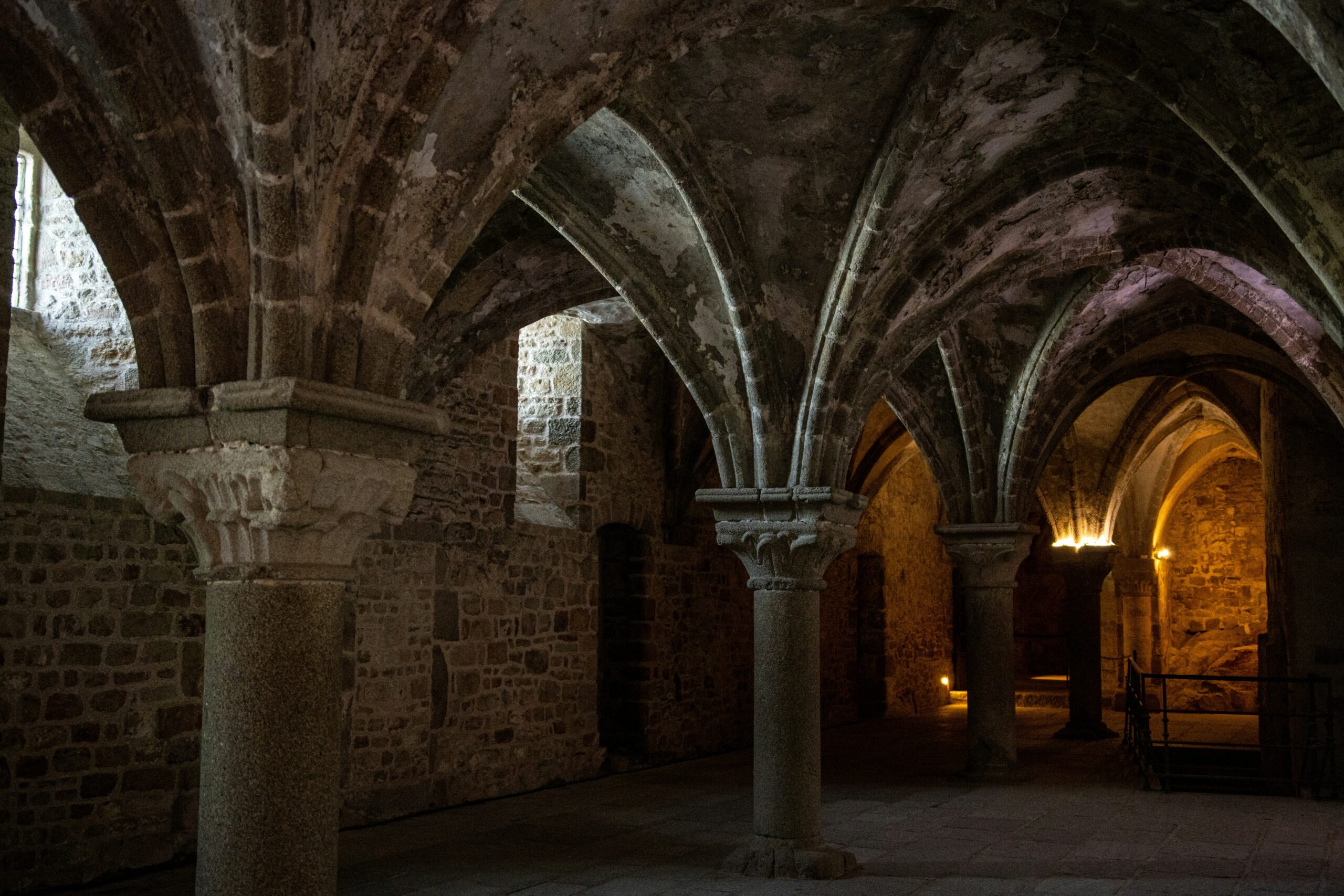Pretty much everything in your story is going to come down to these few pages. In the time between the Third Plot Point and the Resolution, the pacing is going to get faster and faster. The pieces are going to fall together. It’s the final showdown between the Truth and the Lie—the confrontation between the MC and the antagonist. It’s the Climax.

Remember, the MC originally dreaded full confrontation. But now they are going to dive headfirst into it. Having gone through the Third Plot Point, they are ready to stand up to the Lie and the antagonist once and for all.
Let’s take a look at a few elements to remember when writing your story’s Climax:
- The location
Since this is one of the most important moments in the story, location is key. If you can, try to tie it in to the rest of the story. Maybe it’s a previously-visited place, or the location of a vital backstory event, or the long-foreshadowed lair of the antagonist.
Either way, make sure to put some thought into the location… the right setting for your Climax can put an even greater emphasis on the importance of the scene.
In “The Basket of Flowers,” the line between the Climax and the Resolution is very slight. This is because, again, it is a very character-driven story. However, we do see the symbolic graveyard setting being used, and Mary does end up returning to the castle where everything began.
In “Pendragon,” the Climax takes place mostly in a forest location during and after the battle. While the setting itself might not seem significant, the fact that the final battle against the Saxons takes place here makes it important.
- The characters
During the Climax, you will want to gather all of your main characters for the final showdown. Each character has his own, little Climax to fulfill, and they can also contribute to the MC’s Climax. If possible, you can begin to send your side characters towards the location of the Climax at the beginning of the Third Act. That way, when the Climax does roll around, all of the pieces are in place.
In “The Basket of Flowers,” there is a general assembling of the supporting characters. First, Amelia and Mary are reunited, and then they later return to the farm to confront Helen and to help Elijah and Sarah. While Juliette is not present, she is briefly mentioned, which we’ll discuss more in a bit.
In “Pendragon,” the supporting characters are brought together for Artos’ Climax, including a very minor character who fulfills his subplot. The Saxon whom Artos led to Christ earlier in the film returns and rescues Wenneveria and Adria, though at the price of his own life.
After being rescued, Wenneveria meets up with the royal army and saves Artos from Caydern. They then return to the battlefield together to aid Brotus in fighting the Saxons.
- The elements
The Climax is a great place to unleash symbolism and fulfill foreshadowing. Perhaps a familiar line of dialogue is repeated, a weapon from a previous scene is used, or the setting itself hearkens back to something earlier in the story.
Using elements that the audience has already become acquainted with is a great way to tie things together. It will help to drive the point home, and also provide more emotional resonance to the Climax.
In “The Basket of Flowers,” the biggest elements that are brought back are the characters themselves (especially Amelia). The fact that Mary hasn’t seen her friend in so long gives their reunion the perfect blend of emotions.
In “Pendragon,” one small element that’s brought back is the cross that the dying Saxon holds in his hand. This reminds us of what—or, rather, Who—the story is about. Later, the Climax between Artos and Caydern takes place during a sword-fight, and element that has become very familiar in this movie. And, of course, we have the return of Adria, Artos’ sister, whom he had been searching for since his capture by the Saxons.
- The action
In most Climaxes, there will be a lot of action in the form of battles, chase scenes, and hand-to-hand combat. However, you don’t always have to include these elements in your Climax… it mostly depends on the genre of your story. Either way, the pacing of the internal conflict will ramp up, providing that sense of tension and suspension that usually accompanies a Climax.
If you do choose to include external action in your Climax, make sure to go all out. Bring back those elements I mentioned before… have the MC fight through goons, minions, henchmen, sidekicks, and right-hand-men before he reaches the final boss… and maybe throw in a plot twist or two.
In “The Basket of Flowers,” there isn’t much external action, but we are still provided with plenty of internal conflict.
In “Pendragon,” there is a lot of action, from the battle with the Saxons to the more personal sword-fight between Artos and Caydern.
- The loose ends
Along with the MC’s Climatic Moment, you will want to tie up any loose ends that have been left hanging. These include the subplots of the supporting characters, as well as any plot threads that need to be tied off.
In “The Basket of Flowers,” we see each character getting their own ending, from Helen’s punishment to Elijah and Sarah’s reward.
In “Pendragon,” Brotus bravely leads the army against the Saxons, Hengest is killed, and Adria has been found alive. This paves the way for the other, more major characters to fulfill their own arcs.
- The antagonist
Then, at last, the time has come. The MC has fought through the rest of the obstacles only to come face to face with the main antagonist. This is where your best action sequence will take place, your best dialogue will be had, and perhaps even your most shocking plot reveal will be unleashed.
Your MC has come a long way already, but it’s not over yet. They’re exhausted and drained—mentally, and most likely physically—yet they still have their greatest foe to face.
In “The Basket of Flowers,” the World is really the main antagonist, but Mary faced off with that during the Third Plot Point. She merely mentions Juliette during the Climax, though she does face off with Helen during the Climactic Moment. Again, this Climax is not the best example, as Mary faced her antagonists backwards in order of importance.
In “Pendragon,” Artos first faces off with the minor antagonist, Hengest, and kills him. Though much of the conflict came from Hengest and the Saxons, Caydern is ultimately the real villain since he represents the Lie and caused a lot of conflict himself. So it’s fitting that the Climactic Moment doesn’t arrive until Artos comes face to face with Caydern. This happens after the battle, when Artos awakes (after collapsing in exhaustion) to find that Caydern has captured Wenneveria.
- The Truth
Here, during the Climatic Moment, is where the Lie is restated, and it’s time for the ultimate question to be answered: Is the Truth capable of defeating the Lie? And will the MC stand strong in their belief in the Truth? The answer to both of these, of course, is a resounding yes.
The MC restates or demonstrates the Truth in its highest form, fully crushing the Lie. Placing their full trust in the Truth, the MC is ultimately victorious over the Lie.
In “The Basket of Flowers,” Mary resolves to find Juliette and let her know she’s forgiven her. (This isn’t really an action specific to her Truth, but there really is no other time during the Climax that could be defined as the Climactic Moment.)
In “Pendragon,” Caydern gives Artos a choice: Hand over full rule of the kingdom or watch Wenneveria die. Instead of choosing, Artos relies on God and stands up to Caydern, which results in a huge sword fight. After the camp is accidentally set on fire, Artos selflessly pushes Wenneveria out of the way, and he and Caydern disappear into the flames.
- The expectations
Overall, you will want to fulfill the expectations of your readers. They’ve come all this way with you, so you want to give them the best you can. While, in a sense, you want to do the unexpected in terms of plot twists, you also want to give your readers the ending they’re expecting.
You want them to sit back when they’re finished and feel satisfied with the conclusion. And that starts at the Climax, not the Resolution. Writing a good Climax will pave the way for a low-effort Resolution that doesn’t take up too much book space.
In “The Basket of Flowers,” Mary and Amelia return to the farm, where they banish Helen and give Elijah and Sarah the cottage that Mary used to live in.
In “Pendragon,” Artos emerges from the dying embers, having defeated Caydern. He is then reunited with Adria at long last, and he, Adria, and Wenneveria embrace.
Here are a few more Climaxes to look at:
- Sophie and the BFG recruit the queen’s help, and they banish the giants forever (“The BFG”)
- Eve, with the help of the ship captain and some of the humans, returns the ship to earth and replaces Wall-E’s spare parts, bringing him back to life (“Wall-E”)
- Will fights and kills most of the men, and Amy returns to his side as he kills Frank Miller (“High Noon”)
- The Browns return to save Paddington from Millicent, embracing him as a part of their family (“Paddington”)
Comment below the Climax from your favorite book or movie!

